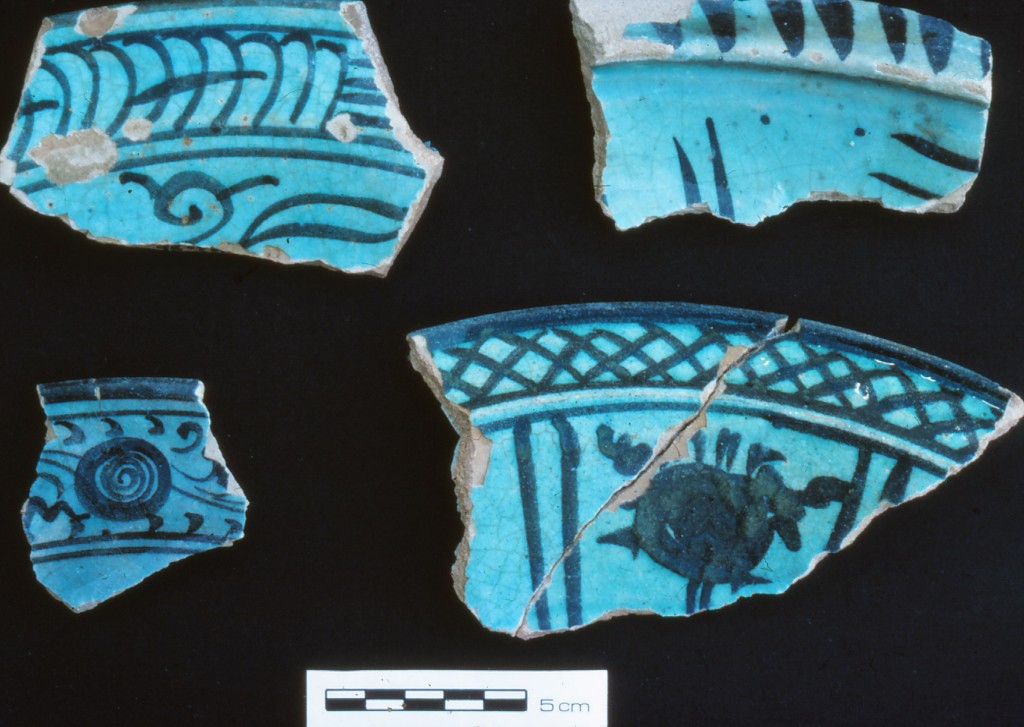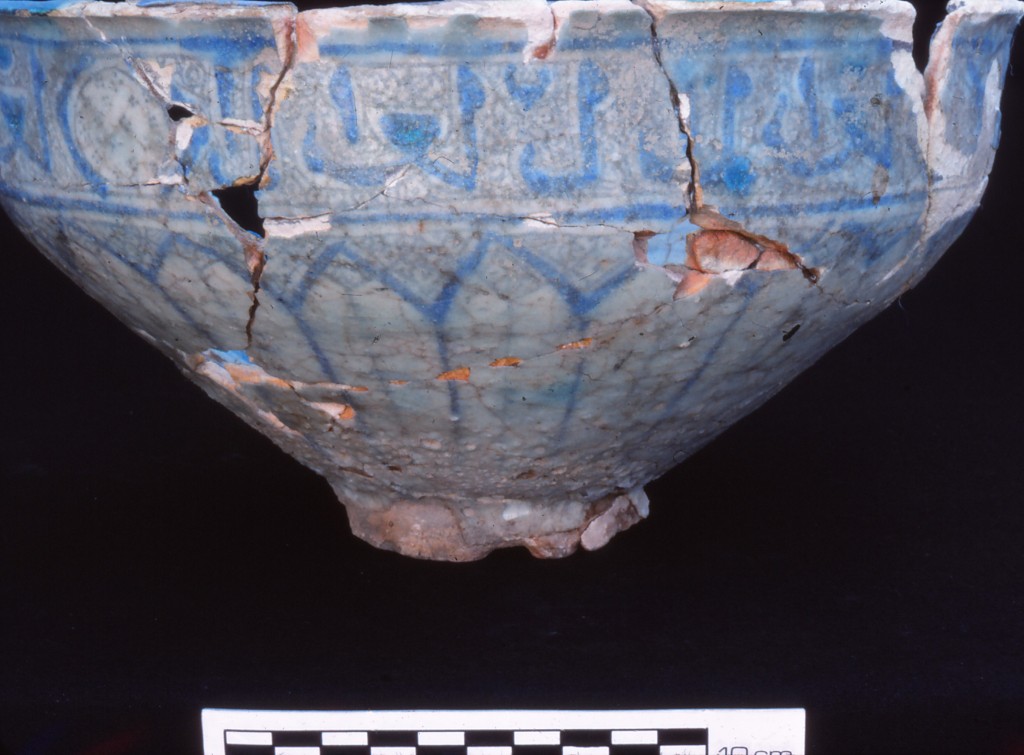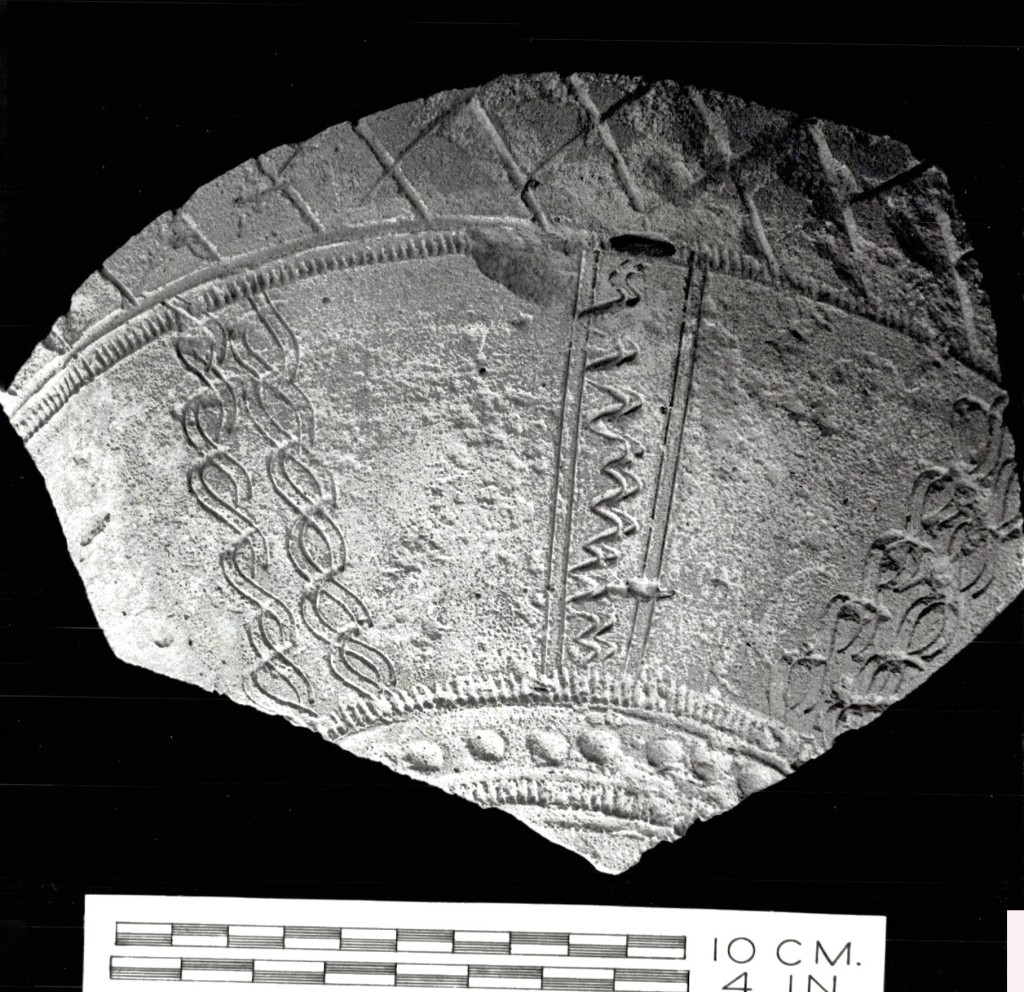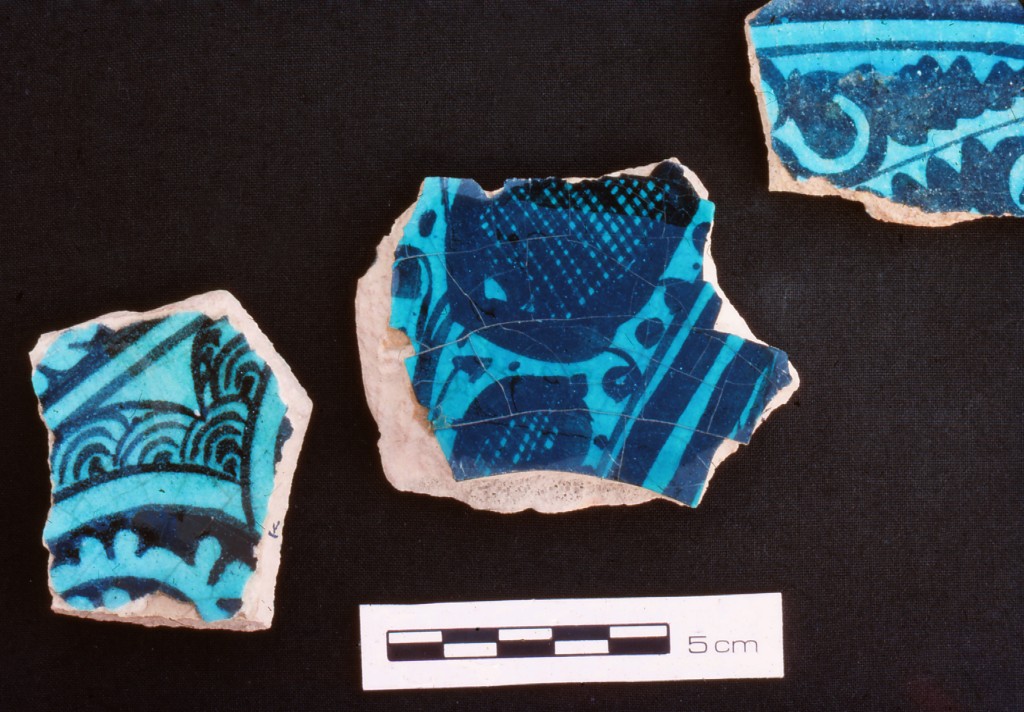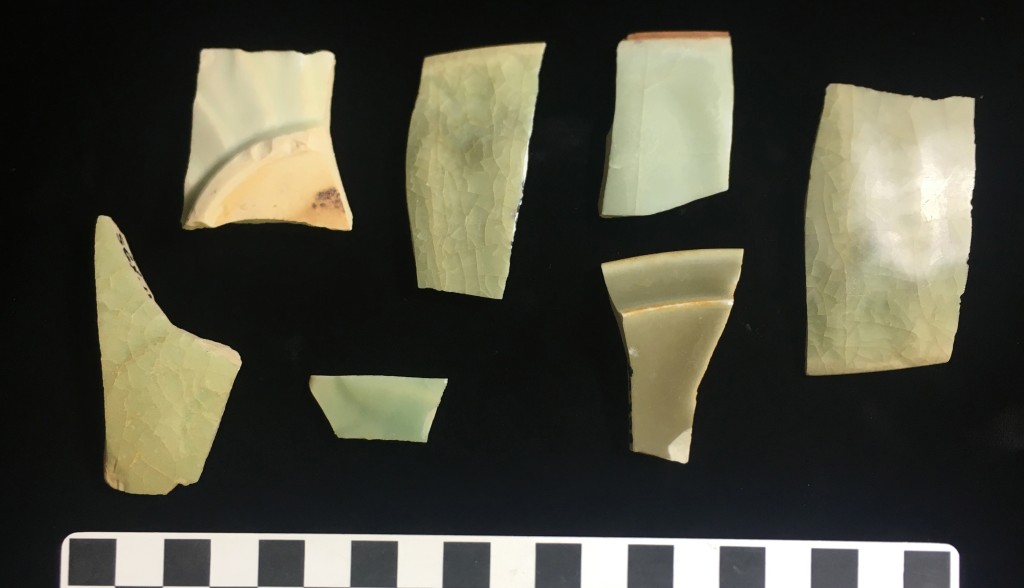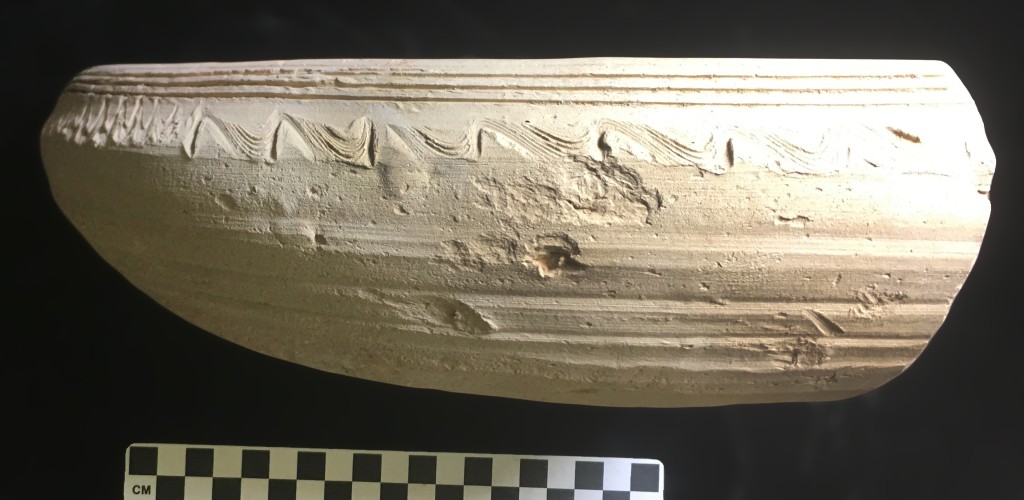Timurid
The last extensive occupation of Sistan took place in the century after Tamerlane is known to have conquered the region (late 14th to 15th century CE). Rather than devastation, as is recorded in historical texts, the area blossomed with numerous large agricultural estates, especially noticeable in Sar-o-Tar. From the final occupation of this deserted area, there were numerous Timurid ceramic remains.
The dominant feature of Timurid pottery was a common style of glazed plate, made of soft white fritware with black painted designs on the interior underneath a turquoise glaze and sitting on a disc base. Plates of this type were ubiquitous in the area from Timurid times.
We were also able to identify several other glazed styles, including some with inscribed texts on them. We found several types of non-glazed wares, including water jugs with large stump feet and other jars that were decorated with incised geometric designs along the body.
Chinese imported ceramics were also common at Timurid sites, mostly celadon wares, some decorated with ridged edges or other relief designs. The dating of Chinese exported ceramics is at a very advanced stage and that knowledge helped us put our collections into a more solid chronological framework.
